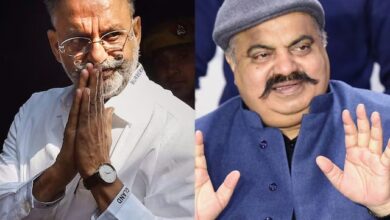Polling with a hint of economic hardship
Is this the year 2004? That general election is still remembered for its unexpected outcomes, which affected both the victor and the loser. It also had a long-lasting effect on political analysts because of the misleading campaign that resulted in a regime transition. Actually, the BJP’s “India Shining” theme won the election; the Congress did not do anything to help it. Because, in the eyes of the majority, India was not glowing, which in turn offended the clever alec copywriter’s joke.

A new poll conducted by the Centre for the Study of Developing Societies (CSDS), a think tank established almost 60 years ago by political scientists Rajni Kothari, DL Sheth, and Ashis Nandy, brings to mind the electioneering of 2004. On Thursday, a national daily revealed the poll findings. The CSDS study indicates that price increases and unemployment—rather than Hindutva—are the main poll issues, or prime worries.
With 8 percentage points each, corruption and the Ram Temple are demoted to the fifth rank in terms of priority issues, behind employment (27%), inflation (23%), development (13%), and other replies (9%). The surveyors, who claim to have visited 400 polling places in 100 parliamentary seats in 19 states and spoken with 10,019 respondents, revealed a startling level of anxiety around unemployment.
Approximately 62% of individuals polled seemed to have had trouble finding employment, with this difficulty being greater in large cities than in smaller towns and villages. This number is concerning. The true test of a society’s development should not be the rise and rise of the stock index or the riches of Indian billionaires, but rather the employment of the greatest number of unemployed people. It was not for the poor, who showed their disapproval on election day, that India shone in 2004 for the governing party.
The second problem that affects the poor is price increases: 71% of respondents to the study mentioned price increases, and 76% of the poor were unhappy about this. The BJP need to take note of this and sit up. Price increases and unemployment are two related livelihood concerns that have the power to transcend identity politics. In actuality, it doesn’t matter what opinion leaders and influencers believe if the people who are less fortunate are angry because, as this poll indicates, their numbers are substantial and that’s what matters.
In contrast to 2004, it seems that the current administration is aware of the problem. The governing party seems to be eager to make apologies based on all it has done leading up to the elections. The BJP has been forming alliances with regional supporters or staging a three- or four-cornered race to split the opposition’s votes from Kashmir to Kanyakumari. At the very least, Ghulam Mohammad Saroori is anticipated to divide Muslim votes in the Udhampur seat, where Ghulam Nabi Azad’s party has secured a competitive multi-cornered race.
Unlike a frontal struggle between two fronts, the four-cornered war in Punjab is anticipated to provide a mixed bag of outcomes. The governing party would only benefit from the peaceful removal of the Jannayak Janta Party (JJP) from the BJP administration in Haryana by dividing the Jat votes of the opposition. The JJP and Indian National Lok Dal, the two parties fielded by the Chautala dynasty, are predicted to steal some of the Jat votes that would have gone to Bhupinder Singh Hooda of the Congress.
The Congress is now strengthening its Jat credentials with the return of Birender Singh and his son. However, the BJP anticipates that OBC Chief Minister Nayab Singh Saini would overturn Manohar Lal Khattar’s nine-year anti-incumbency rule and also lead to a counter-consolidation of non-Jat votes. The strategy could or might not succeed, but what’s on show is a poll plan that takes into account social, political, and local considerations. Can these actions alleviate the suffering brought on by unemployment?
The Centre for Monitoring Indian Economy (CMIE) reports that in January 2023, Haryana has the lowest unemployment rate in the nation, at 37.4%. Indeed, the Haryana government has disputed it, and the CMIE statistics should only be used as a guide and not as absolute fact. It’s intriguing to see the economic hardship and the political response from the BJP, which involves a vote-splitting tactic and a new chief minister.
The BJP practises coalitions, vote-splitting, defections, and realigning of social forces in every state of significance, excepting bipolar contests, and sometimes even in areas where it has nothing at risk. In high-stakes states with 196 seats, reaching out to Chief Minister Nitish Kumar in Bihar, Jayant Chaudhary of the Rashtriya Lok Dal in Uttar Pradesh, former Prime Minister Deve Gowda in Karnataka, and defeating Shiv Sena and NCP splinter groups in Maharashtra were all distress-relieving measures.
The NDA, headed by the BJP, had taken 170 of these seats in 2019. It seems that the BJP planned to exploit economic hardship as an excuse to manipulate elections in each of these states. The issue now is whether unemployment and inflation will inflict enough damage on the BJP to overcome the tactics’ absorption barrier. The BJP was soundly beaten by the economic downturn in 2004 without any effort on the part of the Congress. Following the elections, senior BJP leader Pramod Mahajan said that the impoverished were responsible for toppling the administration.
Now, things are different. The administration is aware of what lies ahead for it. Every level of micromanagement has been carried out, and PM Modi is always mentioning the welfare programs he has implemented to address the issues of the less fortunate. Is it going to work? Is it sufficient? Well, the impoverished’s rage is still contained and doesn’t seem to be growing into a massive wave of unhappiness just yet.







